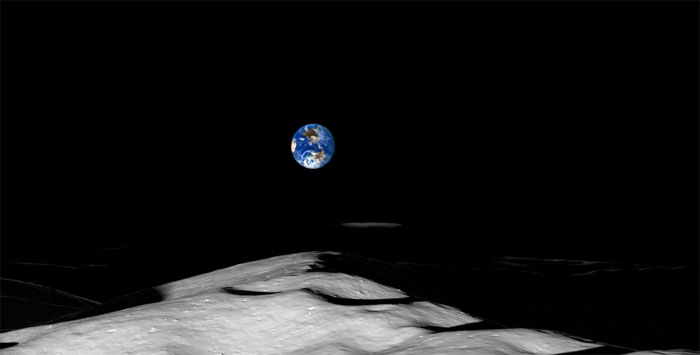NASA hopes astronauts can witness Earth from the lunar poles by the end of the 2020s.
(Video: NASA)
The NASA Scientific Visualization Studio at the Goddard Space Flight Center in Maryland has shared a short video simulating the view from the south pole of the Moon over a period of more than three months. During this time, Earth rises and sets multiple times while the brilliant Sun moves horizontally across the horizon. In fact, Earth passes in front of and obscures the Sun, contrasting with the lunar eclipse phenomenon we see from the ground.
“For an observer on Earth, this is a lunar eclipse, where the Moon passes through Earth’s shadow. However, from the Moon, it is a solar eclipse,” NASA stated.

Simulation of Earth viewed from the south pole of the Moon.
The virtual camera in the graphics is located on the Shackleton Crater rim, appearing partially in the lower right corner of the frame. This is the area NASA targets for landing in its Artemis Moon mission. The agency hopes to land astronauts on the lunar surface by the end of the 2020s. A series of robotic explorers supporting the mission under the Commercial Lunar Payload Services (CLPS) program could launch to the Moon in early 2022.
NASA’s uncrewed Artemis 1 mission will orbit the Moon and return to Earth, with a planned launch in February 2022. This mission has been delayed several times due to technical issues. The next mission, Artemis 2, will carry a Canadian astronaut to orbit the Moon in 2023. NASA hopes the lunar landing mission named Artemis 3 can take place in 2024.
These timelines may change depending on the completion of the Artemis 1 mission, technology development, and funding acquisition.


















































